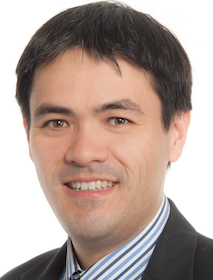Global photographic assessment of men aged 18 to 60 years with male pattern hair loss receiving finasteride 1 mg or placebo.
Olsen EA, Whiting DA, Savin R, Rodgers A, Johnson-Levonas AO, Round E, Rotonda J, Kaufman KD; Male Pattern Hair Loss Study Group.
J Am Acad Dermatol. 2012 Sep;67(3):379-86. doi: 10.1016/j.jaad.2011.10.027. Epub 2012 Feb 9.
- Hair loss is a problem in men and women and is a source of great psychological distress. The most common cause of hair loss is androgenic (androgenetic) alopecia.
- The severity of androgenic alopecia is assessed using:
- the Hamilton scale in male-pattern androgenic alopecia (male-pattern hair loss (MPHL))
- the Ludwig scale in female-pattern androgeneic alopecia (female-pattern hair loss (FPHL))
- The cause is largely unknown but a hormonal imbalance could be involved.
- Treatment options aim to:
- increase blood supply to the hair follicle: topical minoxidil
- reduce the conversion of testosterone to dihydro-testosterone through the inhibition of an enzyme called 5 alpha-reductase: oral finasteride at a usual dose of 1mg per day.
- In this study two groups of men (aged 18-41 and 41-60) were treated with finasteride 1mg. Photographic assessment was done after 24 months on the following areas:
- vertex
- anterior/mid scalp
- frontal area
- temporal area
Results. After 24 months:
- there was a statistically significant hair regrowth in all treated ares.
- concerning hair loss (more appropriately “hair thinning”):
- reduced hair loss in all treated areas was observed in younger men
- reduced hair loss was only observed in the frontal / temporal areas in the older age group.
- Versus the placebo group, there was also a slight increase of drug-related sexual adverse experiences.
Comments
- The conclusion is that the earlier the treatment, the better especially that reduced hair fall can be observed in all treatment areas in the 18-41 age group.
- This study evaluates the results in a group, not individuals. Finasteride enables a faster response than minoxidil but satisfactory results can only be reached 30% of the treated individuals.
- Also sexual adverse side-effects need to be considered as the treatment needs to be continued for life to maintain the effects. Recent papers have reported cases where the loss of sexual function became permanent (article)
- In practice in our opinion, it is advisable to:
- start with a topical spray of minoxidil 2% and move higher (as irritation can become an issue when reaching 4%). As a satisfactory response reaches only 25% for reduced hair loss and around 10% hair regrowth it is advisable to switch treatment if no result is seen after a years treatment.
- switch to finasteride 1mg per day or combine the treatment with minoxidil. If no response is seen after another year, capillary grafts can be considered. (Note that oral treatment with Spironolactone is used in androgenic alopecia usually only in females).
Source of information: here




 +41 22 738 18 48
+41 22 738 18 48